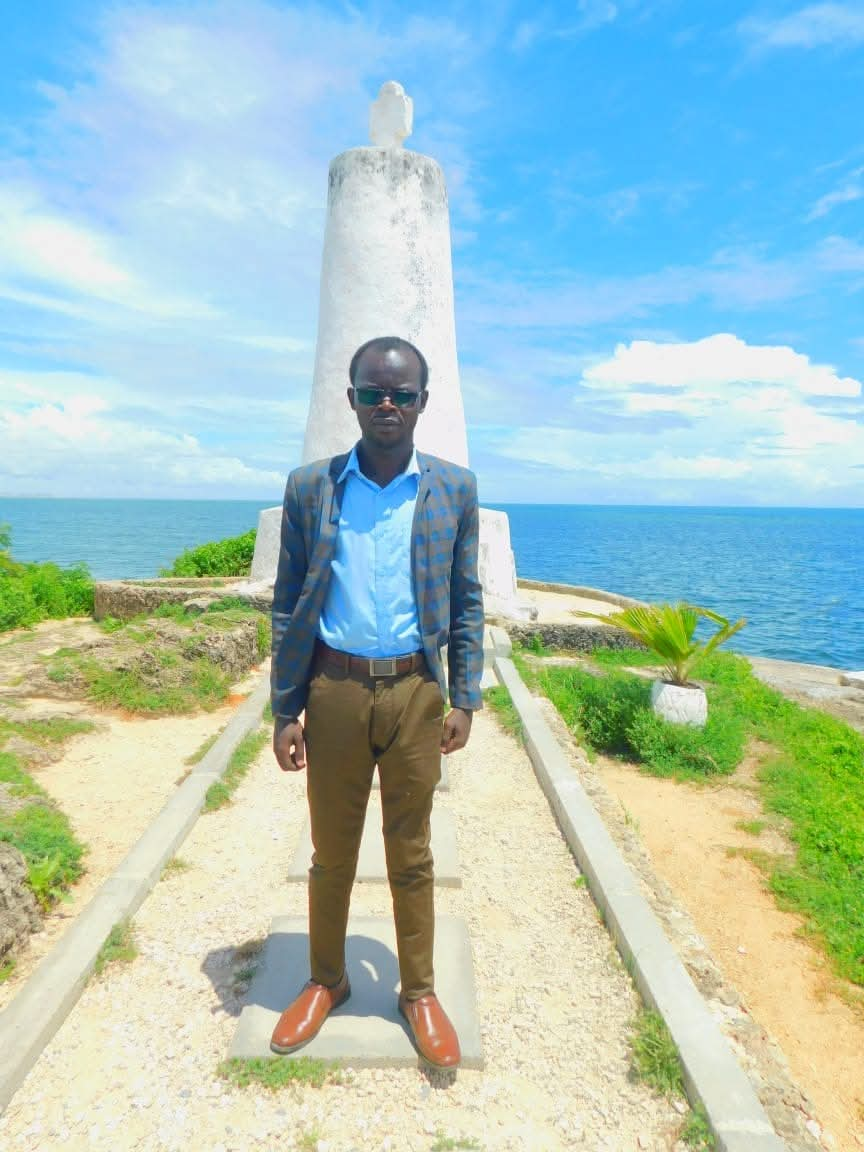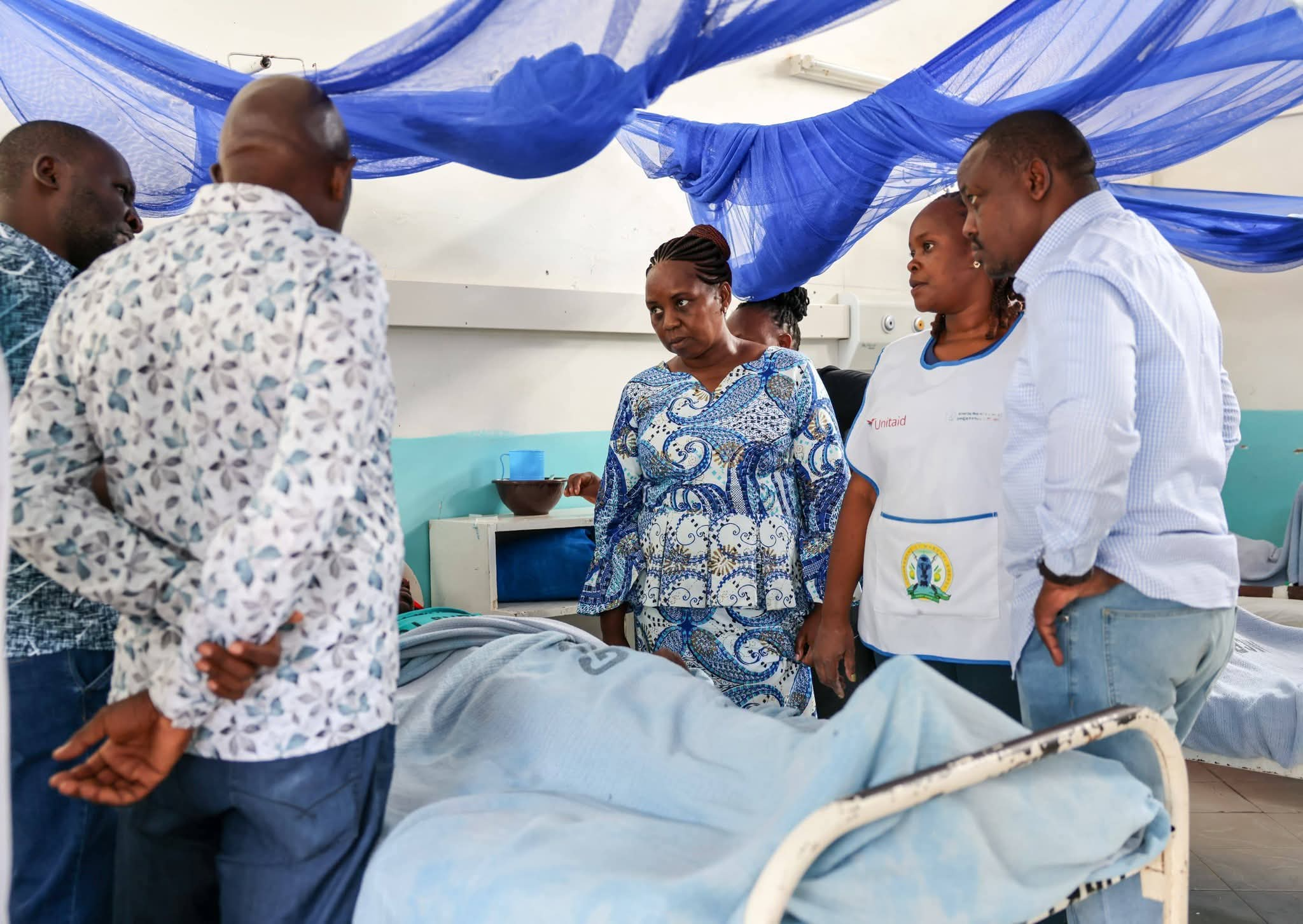I am writing this traveling tale after some time now. I am thinking on my Microsoft Surface Pro while on a Shuttle: Dwarfing distance from Meru to Nairobi. My intra-personal frame of mind makes me remember fondly the happenings of November 2023 when I visited some counties at the Coast. I spent memorable moments in Kilifi and Mombasa at the sultry shores of Indian Ocean.
As a scribe, I describe this travelogue as “Of Coastal Culture, Literature and Adventure.” I talk about culture because I visited Malindi Museum to learn more about the way of life of the Mijikenda Community. Likewise, on culture, I visited Pastor Ezekiel Odero’s New Life Church and Prayer Centre at Mavueni: to have a first-hand account of the vast investment that we only see on our silvery screens. Then, I write about literature because I was in Malindi Town to discuss the first draft of a Strategic Plan I had assisted Bura Girls School to write and edit. Still on literature, I visited Wogect Hotel in Mombasa Town: to read, write and edit certain content. On adventure, wanderlust made me visit Vasco da Gama Pillar in Malindi Town. Then, I visited Fort Jesus in the old town of Mombasa. This was right because in the years of yore, Helen Keller observed, “Life is either a daring adventure or nothing.”
ALSO READ:
Archdiocese of Nairobi Teachers Day: Honoring teachers as agents of hope and faith
Dear reader, since the advent of the Standard Gauge Railway (SGR), traveling to the coastal strip has been full of fun. The journey is just a jaunt rife with comfort. You board SGR train at Syokimau Station and make a beeline for the Coast. Within 5 hours, you disembark in Mombasa. Albeit, when going to Kilifi, you can alight at Mariakani Station – and take quick turn to Kilifi, a name I think was coined from cliff. Meaning, a piece of land that abut on the vast water that welters with wind. Too true, the trip to the Coast is a tremendous tour. More so, past Mtito Andei, when the metallic snake slithers through the majestic Tsavo National Park. In that theatre of the wild, there is a deep adventure, which is marvellous to one’s mortal eyes. Like in my case, it tickled my adventurous spirit. It touched my spatial intelligence.
More importantly, sandwiched between Mtito Andei and Voi, is the vast Tsavo National Park. People with naturalistic intelligence say that there is both Tsavo East and West. It is the most picturesque image in Africa and beyond. When you crane your curious neck to see the world as the train runts and raves with rage, you spot the dust-red elephants wallowing, rolling and spraying each other. There is the zestful azure of the blue waters of the palm-shaded Galana River. Part of the 300-meters Yatta Plateau – table land – is an interesting scenic site. It is one of the most protected areas in Kenya. For it is the habitat of many mammals, huge herds of dust-red elephants, rhinos, buffaloes, hippos, crocodiles, waterbucks, kudus and gerenuks.
Additionally, there are about 500 species of beautiful birds chirping in that idyllic place. As you behold the vast vistas, you just wonder how engineers that built the railway managed to penetrate through that world so wide and wild. In The Man Eaters of Tsavo — a semi-autobiographical book attributed to the British soldier John Henry, published in 1907 — details his scary experiences in East Africa while supervising the construction of a railroad bridge over the Tsavo Bridge over the Tsavo River in Kenya at the cusp of 1900. The heroic book derives its title from a pack of man-eating lions that slowed down the project for close to 9 months.
ALSO READ:
High school teacher fined KSh 2.5m for defamatory Facebook post against politician
Away from the adventure of Tsavo, it is worth writing about the thrills of my visit. The first day, I arrived in Malindi, I discovered that the old Town is a tourist destination for most of the foreigners. I took note that Malindi is similar to Naivasha when we talk about the ubiquity of hotels. No wonder, when I alighted at Malindi Bus Stop, it was easy to get a good room. The following day, at sunrise, I decided to take a serious tour of Malindi Town. I walked into Malindi Museum to learn more about the nature and culture of the Coastal Communities – more so, the Mijikenda (the nine sub-tribes): Chonyi, Digo, Duruma, Giriama, Jibana, Kambe, Kauma, Rabai and Ribe. I also learnt, Malindi is mostly inhabited by Swahili people. In some popular parlance, Malindi is also described as the “Little Italy” because of the presence of Italians in that old town.
I longed to visit Gede ruins on Watamu Road: to set my two-egg like oval eyes on the old Swahili Town, decrepit and dilapidated buildings I read in history, but I was racing against time. From the Malindi Museum, I tip-toed to the shores to see Vasco da Gama Pillar. Taking a mental flight back to my History lessons in Form One at Nyamninia Secondary School, in Gem, Siaya County, I remembered: the popular pillar was constructed in 1498 or so, by the Portuguese Explorer – Vasco da Gama, after the warm reception he received from the Sultan of Malindi. He did this during his pioneering maritime expedition from Lisbon to India via the Cape of Good Hope (1497-1499).
My tour of Kilifi Town ended at Pastor Ezekiel Odero’s New Life Church and Prayer Centre in Mavueni. I arrived there at 4:00 pm, and realised that one of their mid-week services had just ended. So, I joined the worshipers in a restaurant that sold a vast array of yummy meals. I was not there to search for a “star” as it is said about those who visit the place. Instead, I was there to scout for facts about the nature and culture of those people. Likewise, as I have pointed out, this was an adventurous mission.
ALSO READ:
One day, I will write about my missions in two schools in Kilifi County: Ribe Boys School and St. John’s Kaloleni Girls School. The following morning, at sunrise, I showed up at the Breeze Point Hotel in Malindi Town to meet and interact with the Board of Management (BoM), Parents Association (PA) members, teachers and sponsors of Bura Girls School. This is the national girls’ school of Taita-Taveta County. Meaning, the group I was meeting had travelled for an important assignment. We met in that high-end hotel to spruce up their Strategic Plan, which as an education consultant, I assisted them to write and edit. We pored over that piece of literature the whole day.
In the evening, I boarded a vehicle to the old town of Mombasa. I checked in at Wogect Hotel at PCEA Makupa, a place of peace I like to visit when chanced to be at the Coast. I was there to read, write and rest. The following day, before I decided to board the Nairobi-bound SGR train, adventure drove me to Fort Jesus. This is fort located on Mombasa Island. Historians say, it was designed by a smart Italian architect. It was built between 1593-1596 to guard the Old Port of Mombasa. Fort Jesus became the only fort maintained by the Portuguese on the Swahili Coast. From that time hitherto, it is recognised as a testament to the first successful attempt by a Western power to seize influence over the trade around the Indian Ocean.
By Victor Ochieng’
vochieng.90@gmail.com.0704420232
You can also follow our social media pages on Twitter: Education News KE and Facebook: Education News Newspaper for timely updates.
>>> Click here to stay up-to-date with trending regional stories
>>> Click here to read more informed opinions on the country’s education landscape






